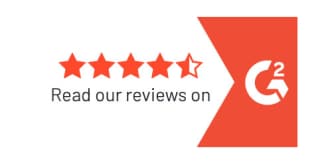When people think of retirement savings, the usual suspects come to mind—401(k)s, IRAs, maybe a Roth account if they’re savvy. But there’s one tax-advantaged tool that often flies under the radar and yet may be the most powerful of them all: the Health Savings Account (HSA).
That’s right. HSAs aren’t just for covering doctor visits and prescriptions. Used strategically, they can become a triple-tax-advantaged retirement powerhouse.
Why HSAs Are Worth Your Attention
You may be asking yourself, “How is a guy who works for a digital 401(k) recordkeeper qualified to talk about HSAs?” I can answer that.
My name is Mike Kouromihelakis. Before I came to 401GO, I spent 4 years at one of the top HSA providers in America, covering strategic accounts and distribution for advisor-sold HSAs in the eastern half of the country.
In my time there, I had countless conversations with product folks at many large broker-dealers and registered investment advisors (RIAs). My pitch was focused on how employer group HSAs can be a great complement to advisors who primarily sell retirement plans.
However, almost every time I had this conversation, the same question came up: “Mike, what about an individual HSA solution for our wealth management advisors? They keep asking for one.”
That made me realize the demand was out there, and the WM advisors were starting to get it. So, now, let’s go over what you need to understand before adding HSAs to your offerings.
What is an HSA?
A Health Savings Account (HSA) is a unique savings account available to individuals enrolled in a high-deductible health plan (HDHP). You can contribute pre-tax dollars to the account and use the funds to pay for qualified medical expenses. The HSA contribution limit for 2025 is $4300 for an individual or $8550 if you are in a family plan. There is an additional $1000 available for catch up if you are age 55 or over.
But what makes HSAs truly unique is their triple tax advantage:
- Contributions are tax-deductible (or pre-tax via payroll).
- Earnings grow tax-free (through interest or investments).
- Withdrawals for qualified medical expenses are tax-free.
No other account offers this combination of tax benefits.
How to Help Your Clients Use HSAs as a Retirement Tool
If you offer HSAs to your clients, you’ll find that most people end up using them like a checking account—contribute and immediately spend. But here’s the smarter play: Encourage them to pay current medical bills out of pocket if they can, and let their HSA investments grow tax-free for years.
Most HSAs allow you to invest your balance in mutual funds or ETFs once you hit a certain threshold (often $1,000 or $2,000). There are a few that even have no minimum requirement. Over decades, this can add up significantly, just like a 401(k) or IRA.
Once your client hits age 65, their HSA dollars can be treated just like any other retirement savings, in that they can use them for any reason. The one BIG difference is there are no required minimum distributions (RMDs) on HSA accounts, so you can let the balance grow as long as you want.
…And as a “Rainy Day” Tax-Free Fund
Here’s a little-known trick: HSAs don’t have a time limit for reimbursement. If you save your medical receipts now, you can withdraw that amount tax free years or even decades later. It’s like building a “rainy day” tax-free fund. You may have heard the term “shoeboxing” before, which references the days when people would save their medical receipts in a shoebox. Thankfully, today, most HSA providers allow you to store these digitally.
Here’s What This Can Actually Look Like
Using today’s 401(k) and HSA contribution limits and assuming a growth rate of 8%:
- After 10 years of maxing out just a 401(k), an individual would have $398,000.
- When we add a maxed-out HSA on top of the 401(k), that total climbs to $543,000.
At the very least, your clients can use their HSA as a tool to pay for healthcare upon retiring. If they do that, they will never have to pay taxes on any of their HSA dollars, no matter how much they have grown.
According to Fidelity, a 65-year-old couple retiring today can expect to spend over $315,000 on healthcare throughout retirement. Medicare helps, but it doesn’t cover everything—think dental, vision, hearing aids, long-term care, and more.
If you aren’t discussing the power of HSAs today with your clients, keep in mind that it’s only a matter of time before another advisor will. Why not be the one to share this incredible opportunity with them?
If you would like to discuss how to integrate HSAs into your wealth management or retirement plan practice, please reach out to me directly or schedule some time to meet.



